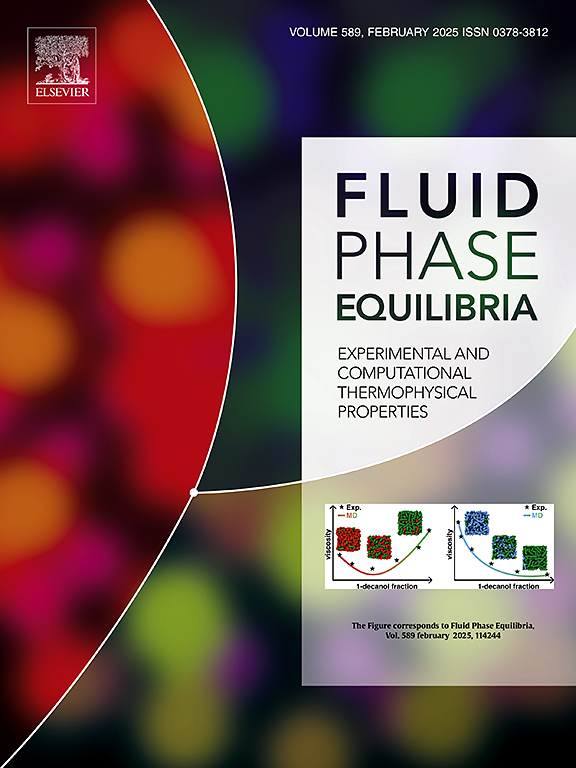Natural gas storage in hydrates in the presence of thermodynamic hydrate promoters: Review and experimental investigation
IF 2.8
3区 工程技术
Q3 CHEMISTRY, PHYSICAL
引用次数: 0
Abstract
Natural gas (NG), the cleanest fossil fuel, is playing an increasingly important role in the current energy supply. However, the safe storage and transportation of flammable NG is a long-standing challenge. Furthermore, NG emission has a stronger per molecule greenhouse effect on the environment than CO2. Therefore, efficient and effective methods of NG storage and transportation are needed. Storing NG in the form of gas hydrate offers advantages over common compression or liquefaction methods, but the thermodynamic conditions required for gas hydrate formation hinder the large-scale application of solidified natural gas (SNG) technology. This work presents a review of phase equilibrium conditions of gas hydrates formed by greenhouse gases including CH4, CO2 and NG in the presence of thermodynamic hydrate promoters. This study uses available thermodynamic software to calculate gas hydrate phase equilibrium using different Equations of State (EoS). We include an experimental investigation using a 2 L autoclave reactor to evaluate the effect of mass transfer, the presence of cyclopentane as a thermodynamic promoter, and the level of subcooling on the NG hydrate formation kinetics. The results show that: 1) Tetrahydrofuran and cyclopentane generally have the strongest thermodynamic-promoting effect; 2) Thermodynamic promotion of cyclopentane on NG hydrate is validated experimentally; 3) NG hydrate formation kinetics is greatly influenced by mechanical stirring (mass transfer), cyclopentane as a co-former and its concentration and subcooling; 4) At high subcooling, cyclopentane-promoted systems show a significantly improved gas storage capacity than the baseline sample; and 5) NG hydrate particles have a size distribution of hundreds of microns under current experimental conditions. This study offers new insight into NG hydrate formation thermodynamics and kinetics that has application to SNG technology.

求助全文
约1分钟内获得全文
求助全文
来源期刊

Fluid Phase Equilibria
工程技术-工程:化工
CiteScore
5.30
自引率
15.40%
发文量
223
审稿时长
53 days
期刊介绍:
Fluid Phase Equilibria publishes high-quality papers dealing with experimental, theoretical, and applied research related to equilibrium and transport properties of fluids, solids, and interfaces. Subjects of interest include physical/phase and chemical equilibria; equilibrium and nonequilibrium thermophysical properties; fundamental thermodynamic relations; and stability. The systems central to the journal include pure substances and mixtures of organic and inorganic materials, including polymers, biochemicals, and surfactants with sufficient characterization of composition and purity for the results to be reproduced. Alloys are of interest only when thermodynamic studies are included, purely material studies will not be considered. In all cases, authors are expected to provide physical or chemical interpretations of the results.
Experimental research can include measurements under all conditions of temperature, pressure, and composition, including critical and supercritical. Measurements are to be associated with systems and conditions of fundamental or applied interest, and may not be only a collection of routine data, such as physical property or solubility measurements at limited pressures and temperatures close to ambient, or surfactant studies focussed strictly on micellisation or micelle structure. Papers reporting common data must be accompanied by new physical insights and/or contemporary or new theory or techniques.
 求助内容:
求助内容: 应助结果提醒方式:
应助结果提醒方式:


